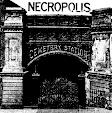ON THE TWENTIETH NIGHT OF HALLOWEEN … I watched You Are Not My Mother (2021), written and directed by Kate Dolan. This is an Irish psychological horror film that examines familial struggles with mental illness through the lens of malicious fairy-changeling mischief. (Spoilers, natch, as this one’s only just been released to streaming.)
Char is a teenage girl whose mother is suffering from depression. One day, after driving Char to school, the mother disappears, leaving her car abandoned in a field. Char’s grandmother and uncle alert the police and conduct a fruitless search that night. In the morning, the mother turns up at the front door with no memory of where she has been. The professionals’ conclusion is that she had a manic-depressive episode and simply needs proper medication. The grandmother, however, who is something of a cunning-folk adherent to the old Gaelic ways, tells Char that her mother has been replaced by an aos sí, a supernatural race of fairy creatures who live beyond the veil. The grandmother believes that this has happened because she frustrated the fairies’ attempt to replace Char herself with a changeling when she was an infant. Now they have sent this false mother thing to recapture Char. At first, Char doesn’t know what to believe. But soon she catches her mother doing inexplicable things, like reaching down her own throat and pulling out misshapen bones.
Most of this film is a patient meditation on coping with a parent’s mental illness, both within one’s family and among one’s unsympathetic peers. But the ambience of ancient Irish legend is constantly present, in the form of the approaching celebration of Samhain, i.e. the Celtic festival coinciding with Halloween; a field trip to a druidic site marking a “liminal space” where “fairy folk could enter the human world”; and the various talismans of protection the grandmother has decorated Char’s home with. This folkloric context gradually moves from the subliminal background to the forefront of conscious terror, thereby entirely eclipsing the modern psychiatric framework. Still, this is definitely a film about mental illness, since the mother is already suffering under its cloud before she is swapped. It uses the symbols, creatures, and sorcerous dynamics of hoary ancestral paganism to do a kind of nightmare work of manifesting a child’s fear of alienation from her mother. The film is successful in this, as far as it goes. My only real criticism is that I think it could have delved much deeper into Char’s relationship with her mother, both on our side of the misty threshold and on the eldritch-fae’s side. The key confrontations between Char and her mother’s doppelgänger all seem to abruptly conclude just as they are getting interesting.
TWISTED TWINS & DUPLICITOUS DOPPELGÄNGERS:
This film gives us an occasion to look at the changeling more directly. In the folk traditions of the British Isles, Scandinavia, Germany, and Poland, a changeling (or “auf”) is an unnatural creature of some sort that fairies replace a human baby with. The fairies may do this out of a desire to raise a particular child as their own or because they wish to plant a spy in our world. The changeling initially looks identical to the substituted child. Soon after, though, it begins to manifest telltale characteristics of its inhumanity, which can include abnormal growths, preternatural abilities, and ravenous hunger. One particularly grim theory is that the changeling myth spread across Northern Europe because it facilitated survival among peasant families. If a new edition to a peasant household showed signs of being unproductive due to a physical or mental defect, it may have been easier to commit infanticide (thus eliminating a food cost that wouldn’t pay off) if the child was believed already lost through exchange with an evil imposter. Similarly, as explored in You Are Not My Mother, when a loved one is transformed by disease or insanity into something unrecognizable, the idea that that person has been replaced with a doppelgänger may arise as a coping mechanism. In such cases, the doppelgänger is not a monster invading our homes from without but a pernicious notion that spawns inside us and imposes itself on others so as to enable unpleasant thoughts and actions toward them.


No comments:
Post a Comment